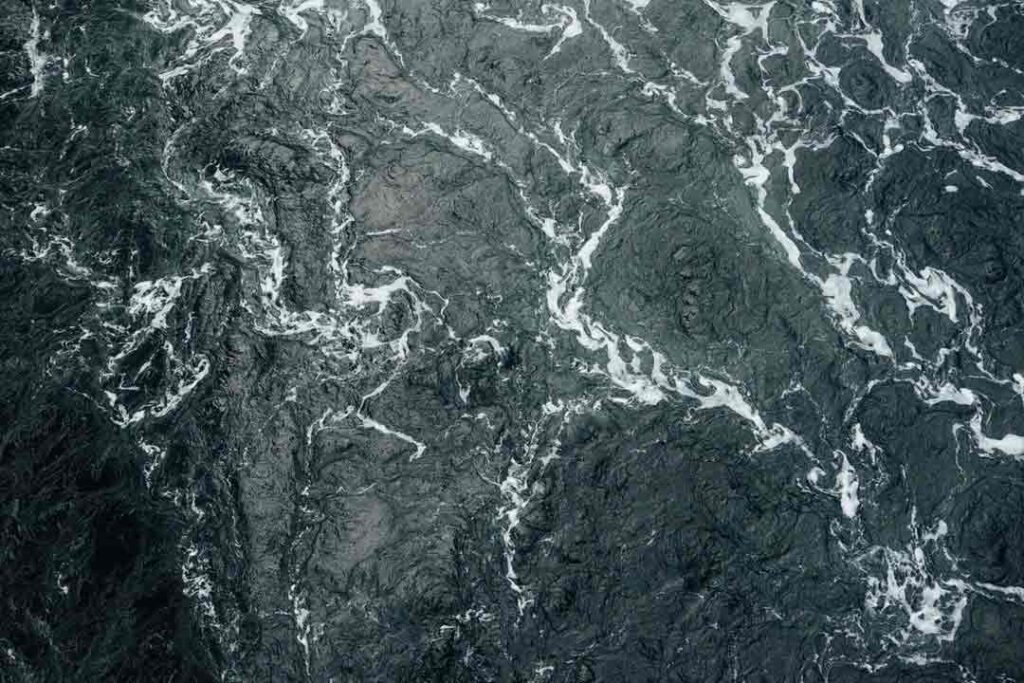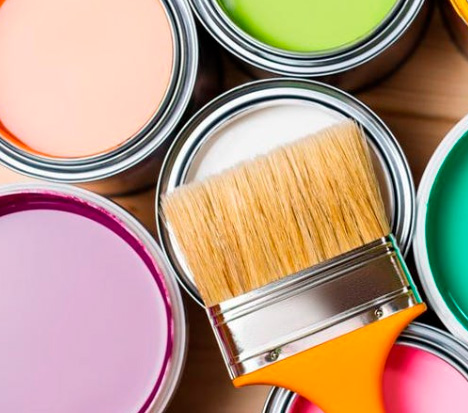At the end of last year, the National Association of Realtors noted that the all-marble look is still in. However, you can do more with marble than just installing it from floor to ceiling. For example, did you know that you can paint marble to create a different look and feel? Whether it’s floors, countertops, columns, or other surfaces throughout the home, painting over existing marble adds an eye-catching finish with minimal hassle. However, it’s not as simple as buying interior paint, slathering it onto the marble, and calling it a day. There’s a process to go through, just like there is when you paint over a tile installation.


Follow along as we provide you with all the tips and tricks that DIYers and experienced installers need to know to paint any marble surface successfully. Read on if you want to learn how to give your rooms new life with unique and personalized finishes.
Can You Paint Marble?
In short, yes. Painting marble is an excellent way to refresh the styling of your home without going through the work and expense of replacing it. You’ll need to ensure you have the right paint, paint strippers, and sealants before you begin, as marble isn’t the easiest material to paint.
However, if you do it correctly, your newly painted marble will look stunning! You’ll be able to customize it so that it perfectly matches the existing design elements in your room.
While it might require a little bit of elbow grease, the bottom line is that whether you want to give your living room a modern vibe or restore some lost luster from aging marble decor, painting marbled surfaces can offer aesthetically pleasing and unique results.
Best Paint for Marble
As mentioned above, you need the right paint to paint marble effectively. It’s important to choose a specialized kind of paint meant for painting stone and marble, rather than regular house paint, as that could end up damaging or even discoloring the marble after painting.
While your choice depends on the overall look you’re hoping to achieve, here are four great options for marble paint that will look great and last long.
Chalk Paint
Chalk paint has become a popular choice for painting marble countertops. It’s easy to apply and gives a beautiful matte finish to the marble surface. Plus, chalk paint requires less prep work than other paints before transforming the marble. This makes any DIY project slightly easier and quicker to prepare.
As chalk paint is specifically designed for porous surfaces, its low-odor and non-toxic characteristics make it ideal for use anywhere in your home. So if you’re looking for an easy yet sophisticated way to update marble countertops, chalk paint is the way to go.
Acrylic-Based Paint
Not everybody loves the matte look chalk paint provides when painting the marble. That’s fine, as you’ve got plenty of other options. For example, acrylic paint is great for painting marble as it’s an affordable water-based product suitable for those with allergies or asthma.
Unfortunately, the acrylic in acrylic paint doesn’t last quite as long when applied to marble, so you should keep anything you paint out of direct sunlight. This means it might not be suitable for countertops in well-lit kitchens or fireplace mantles that receive direct sun during the day. Still, acrylic paint is a cost-effective way to dress up your marble surfaces.
Water-Based Paint
Not only is water an organic liquid that won’t cause any damage to the marble, but it also dries more quickly than oil-based paint.
Moreover, most water-based paints have organic binding agents like alkyd resin, acrylic polymer emulsion, and natural latexes to keep them strong and durable. This means you don’t have to worry about scuffs or scratches in high-traffic marble areas like hallways or entrances, with many people coming in and out daily.
Plus, water-based paint is easy to apply, maintain, and clean.
Oil-Based Paint
Finally, oil-based paint is a great choice for painting marble due to its excellent coverage and thicker texture, making it less likely to drip. Plus, oil-based paint forms a thinner but harder coating which is more resistant to cracking than other paints.
However, you must take special precautions when working with oil-based paint as they’re highly flammable. They can be dangerous when coming in contact with certain materials like gasoline or mineral spirits. Hence, you should typically only use oil-based paint if you have some expertise in painting and knowledge of safety protocols.

What Are the Best Marble Colors?
So, you’re ready to paint the marble tiles you’ve just installed (or are planning on installing). Before you head to the store to purchase one of the marble paint options mentioned above, consider the space’s overall design. Not every room looks good with every type of marble color.
When it comes to marble, many people think of the classic marble look — veined white on an off-white backdrop. However, you’ve got plenty of other options for marble colors, too.
Shades of gray and cream are always popular choices if you want a traditional marble look. But if you’re looking for a more modern look, experiment with brighter shades such as blue, green, or yellow. For an even bolder statement, pair marble colors with complementary hues like navy blues and hunter-greens.
Remember that marble is a timeless and sophisticated material, so choose hues that complement your walls and furniture. When in doubt, it’s usually best to choose marble tiles with the veining you’re looking for and then choose a color that most closely matches the color you’ll be choosing for your paint.
Remember that, in most cases, you’re going to cover up the veining. However, if you use lighter-colored paint (especially if it’s chalk paint), you might be able to see the veining still underneath.

Marble Painting Tips
Now that you’ve selected your marble tiles and paint, it’s time to get creative. Again, painting marble isn’t like painting the walls of your home or wood furniture. It requires a few additional preparation steps beforehand. Follow the painting tips below for the best results.
Clean the Surface
Preparing your marble surface before painting is essential; the cleanliness of the surface can be the difference between a vibrant and successful outcome or a lackluster one. Degreasing cleaner is an option to clean the surface, and if not available, you can use regular soap and some serious scrubbing combined with rinsing as an alternative.
What’s the point here? A clean, dry finish is essential for a successful paint job on any marble, so take your time when cleaning and rinsing, allowing plenty of time to ensure it dries out. If not done correctly, the paint quality will suffer due to residual grease, which adds time and hassle to the project.
Smooth Imperfections
Next, don’t forget to sneak in some sandpaper. This will smooth out imperfections and degloss the surface, allowing the paint to adhere better. A palm sander is ideal for this. We suggest using 200-grit sandpaper as it will give you perfect consistency without taking too much of the surface off.
When sanding, use circular motions in a clockwise direction to ensure you cover the whole surface evenly and don’t leave any missed patches behind. Once complete, wipe away the dust and debris created with a damp cloth, and you’re good to start applying primers.
Applying a Bonding Primer
There are two types of primers you’ll want to apply here. The first is a bonding primer. It adds adhesion and ensures that the paint sticks correctly and covers all areas of the marble surface. Without bonding primer, even several layers of paint will still peel off the marble’s surface prematurely because of its lack of stickiness.
Apply a Clear Epoxy Primer
Wait for the bonding primer to dry. After a couple of hours, apply a layer of clear epoxy primer. It fills any weave and smoothes the surface to achieve an even finish. Not only that, a clear epoxy primer enhances the texture of the paint job (if that’s your goal) and remains clear after curing.
Paint the Marble
Finally, you’re ready to paint the marble! We suggest selecting from one of the four paint types mentioned above. Then, use a polyester roller cover and a fresh, clean roller to apply a layer of paint to the primed marble tile.
Take your time and ensure every bit is covered for that perfect look. With proper preparation and care throughout this process, you can achieve beautifully painted marble.
How many layers do you need? It depends on the look you’re going for and the color and type of paint used. Typically, one layer will be enough. However, you might need a few additional layers if you’re using lighter paint. After you’ve achieved the look you were going for, don’t forget to add a top coat.
Design with Rubi
At Rubi, we understand the complexity of every renovation, from tiling to maintenance. We’re proud to be Europe’s leading manufacturer of tools and equipment for construction and believe that our resources can make a big difference in your next home project.
Our library of resources contains guides and helpful articles to help you master even the most complex tasks, such as how to paint marble or lay tile effectively. Are you ready to learn more? Click here to view all of our tips and tricks.



Post a comment